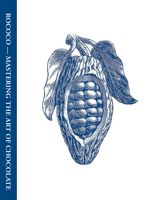Advertisement
Tools and Equipment
Appears in
Published 2012
Make sure that all your tools and equipment are clean and ready to use. You will need the following (stockists):
— Large stepped palette knife with crooked heel
— Triangle blade
— Scraper
— Marble or granite slab
— Thermometer, preferably digital
— Bain-marie
— Moulds (if using)
- Melt 1–2kg dark chocolate couverture, broken into small pieces in a large bowl over a bain-marie to 50–55°C. Check that it is completely melted or decrystallised (solid crystals interfere with the tempering process).
- Pour three-quarters of the melted chocolate on to a clean and dry marble or granite surface. Keep the remaining quarter of chocolate in a small bowl set to one side.
- Spread the chocolate out into a large circle on the marble slab using the flat edge of the palette knife in your left hand, and with the triangle blade in your right hand push the chocolate from the outside of the circle back into the centre. Each time you make a stroke, scrape the chocolate off the triangle on the edge of the palette knife, held above the centre of the marble. The triangle blade does all the moving, the palette knife stays relatively still. You should now have a smaller circle of chocolate. Spread it thin again into a larger circle with the palette knife, and start pushing the chocolate again with the triangle blade. You will soon begin to feel some resistance as the chocolate thickens, and it should have a silky sheen. This is the sign that the chocolate is cooling and crystals are forming. Regularly test the temperature, and when it reaches 29°C it has cooled enough and should have a satin sheen. It will not be as shiny as it was and it will have thickened to the consistency of clotted cream.
- Quickly scrape the chocolate back into the empty large bowl. Check the temperature of the untempered quarter of chocolate in the small bowl; if it’s warm and still fluid, add some of it to the large bowl of cooled chocolate and stir to combine. If the small bowl is cool to touch, check the temperature (you may need to give it one or two 15–30-second bursts in the microwave to bring it back up to 50°C). The two chocolates mixed in the bowl should have cooled to the correct temperature as recommended on page 227 (i.e. 31–32°C for dark chocolate). Check it is tempered by dipping one side of a small piece of silicone or greaseproof paper in the chocolate. Leave the paper, chocolate side up, on the side at room temperature for a few minutes. If it sets evenly and with no streaking, then the chocolate is tempered.
- Now the chocolate is ready to be used for moulding, dipping or decorations (see Decorating Chocolate). Your tempered chocolate will not remain stable for long, so you will need to work fast. If it cools, add a little more hot chocolate or use a hair dryer to warm it a little or heat it in the microwave (for just a few seconds) or over a bain-marie to keep the temperature constant. Even professional chocolatiers have days when chocolate refuses to behave, so much patience and practice is needed. Happily you can carry on melting and re-tempering as many times as you like. As long as no water gets into it, it can be decrystallised and recrystallised.


